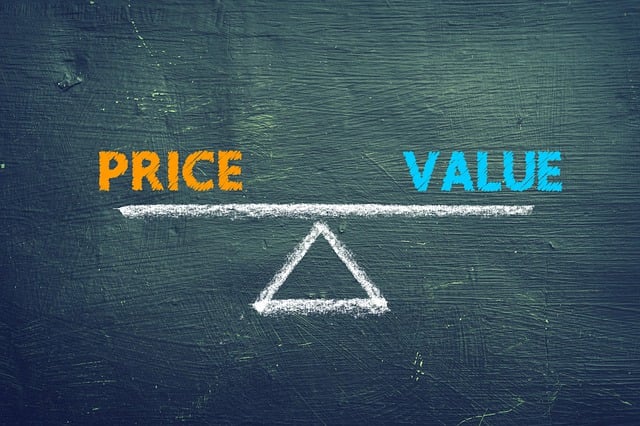When it comes to scaling your SaaS business, one of the most critical—and often trickiest—decisions you’ll make is how to price your product. The right pricing model can drive rapid growth, improve customer acquisition, and boost retention. The wrong one? It can lead to missed revenue, high churn, and a whole lot of frustration.
There’s no one-size-fits-all pricing strategy for SaaS. What works for a CRM platform might not work for a cybersecurity startup. So how do you choose the best pricing model for your SaaS product?
Let’s break down the most common SaaS pricing models, explore what works and what doesn’t, and give you the tools you need to choose a pricing strategy that drives results.
#BePhierce
1. Freemium Pricing: A Double-Edged Sword
Freemium is one of the most popular pricing models in SaaS. You offer a basic version of your product for free, while charging for advanced features or premium usage levels. The goal? Hook users with the free version, then convert them into paying customers.
The Phierce Play:
– What Works: Freemium can be a powerful lead-gen tool. It removes the barrier to entry and allows users to experience your product before they commit. If your free version delivers enough value, it creates a strong incentive to upgrade.
– What Doesn’t: The biggest pitfall with freemium is conversion rates. If users are satisfied with the free version, they might never feel the need to upgrade. You also risk attracting freeloaders who drain resources without contributing revenue. Freemium can also lead to high customer support costs if you’re supporting a large base of non-paying users.
Pro Tip: Make sure your free version offers value but leaves enough features behind a paywall to encourage upgrades. Dropbox and Slack have nailed this balance—offering free tiers that are highly functional but not scalable without paid features.
2. Tiered Pricing: Flexibility for Different User Needs
Tiered pricing offers different packages at varying price points, each with a specific set of features. Think of it like a buffet: customers choose the plan that best fits their needs and budget. Tiered pricing is common in SaaS because it allows businesses to target a wider range of users.
The Phierce Play:
– What Works: Tiered pricing gives users flexibility and ensures that you’re capturing value from different types of customers. It’s particularly useful for SaaS products that serve a diverse customer base, from startups to enterprises. Salesforce does this exceptionally well with its range of pricing plans for businesses of all sizes.
– What Doesn’t: Too many tiers or poorly differentiated packages can confuse customers. If users can’t easily see the value difference between your tiers, they may default to the cheapest option (or worse—walk away). Also, if your most expensive tier doesn’t provide enough added value, you’ll have trouble upselling.
Pro Tip: Keep it simple. Offer 2-4 clear tiers, and focus on value progression—where each upgrade offers a significant improvement in features or capabilities. Make sure your most valuable features are only available at higher price points.
3. Per-User Pricing: Simple, Scalable, but Risky
Per-user pricing is exactly what it sounds like: you charge based on the number of users or seats a customer needs. It’s simple, predictable, and scales as the customer grows, making it a popular choice for B2B SaaS products.
The Phierce Play:
– What Works: Per-user pricing is straightforward and easy to understand, which makes it a low-friction model for customer acquisition. It also scales naturally with a customer’s growth—if they hire more employees or expand their usage, you get paid more.
– What Doesn’t: This model can backfire if your product is meant to be used by multiple users within a company. User consolidation—where customers share login credentials to avoid paying for extra seats—is a real threat. Per-user pricing can also discourage adoption within larger teams if the cost grows too quickly as more users come on board.
Pro Tip: Consider adding tiered per-user pricing or caps on users to prevent consolidation. You can also introduce volume discounts to encourage larger teams to adopt your product without feeling like they’re being nickel-and-dimed.
4. Usage-Based Pricing: Pay for What You Use
Usage-based pricing (also known as pay-as-you-go) charges customers based on how much of the product they use. This model is common in industries like cloud storage and communication tools, where pricing is tied to usage metrics like data storage, API calls, or minutes used.
The Phierce Play:
– What Works: Usage-based pricing aligns perfectly with the customer’s value perception—users pay more as they get more value from the product. This model is great for scalable services where customer usage can vary dramatically, like AWS or Twilio.
– What Doesn’t: The downside is unpredictability. Customers might feel nervous about unexpected usage spikes leading to higher bills. This can also complicate budgeting for your customers, which may lead to churn if they get hit with a higher-than-expected charge.
Pro Tip: Provide usage dashboards and set usage alerts so customers can easily track their usage and avoid surprises. Also, consider offering freemium thresholds (like 1,000 free API calls per month) to get users hooked on your platform without fear of incurring fees early on.
5. Value-Based Pricing: Aligning Price with Perceived Value
Value-based pricing means you set your price based on the value your product delivers to the customer, rather than on usage or features. This approach is more consultative and works best when you’re solving a significant pain point for a specific industry or business segment.
The Phierce Play:
– What Works: When executed properly, value-based pricing can be incredibly lucrative. It’s all about tying the price of your SaaS solution to the tangible business benefits it delivers. For example, if your software helps companies save thousands of dollars a year, pricing it at $500/month can be easily justified.
– What Doesn’t: This model requires a deep understanding of your customer’s pain points and perceived value, which means it often involves a longer sales cycle. It can also be difficult to implement at scale without significant customer research and segmentation.
Pro Tip: Use case studies and ROI calculators to show potential customers the financial impact of your product. This makes it easier to justify a higher price point.
What Doesn’t Work: Common Pricing Pitfalls
1. Underpricing Your Product:
– Many SaaS startups make the mistake of setting their prices too low in an attempt to attract more customers. While this might help with initial customer acquisition, it can devalue your product in the long run, making it harder to raise prices later without pushback.
2. Overcomplicating Your Pricing Structure:
Simplicity is key. If your pricing model is too complex, it can create friction and confusion, leading prospects to delay their purchase or choose a competitor. Remember, your pricing page should make it easier for people to say “yes,” not leave them scratching their heads.
3. Ignoring Customer Feedback:
Failing to listen to your customers about your pricing strategy is a recipe for disaster. Regularly collect feedback on how your customers perceive your pricing. If customers constantly say your product is “too expensive” or “not worth it,” it’s time to re-evaluate.
The Phierce Takeaway: Pricing is a Growth Lever—Use It Wisely
Choosing the right pricing model for your SaaS product isn’t just about setting a price and walking away. It’s about understanding your market, your customers, and the value your product delivers. The right pricing strategy will fuel your growth, while the wrong one will hold you back.
At Phierce Marketing, we help SaaS companies not only scale their marketing but also fine-tune their pricing strategies for maximum impact. Want help finding the best pricing model for your SaaS business? Request a free pricing strategy consultation or download our SaaS Pricing Model Comparison Guide to get started.
#BePhierce





